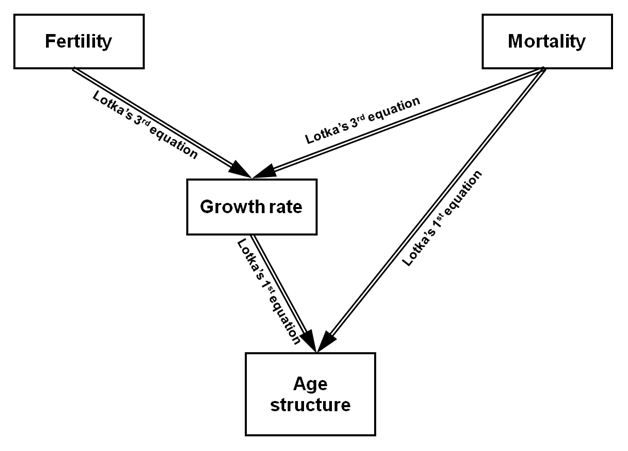Effects of mortality and fertility patterns on growth and age structure in stable populations (cont.)
The following figure shows the pathways along which fertility and mortality determinants act, as explained by Lotka’s first and third equations, on the stable population age structure:

Mortality has a direct effect on the age structure, since Lx appears explicitly in the equation for every value of x (age) determining ax. The age pattern of survivorship in the life table population is reflected directly in the age pattern of the stable population. Mortality also acts indirectly on age structure, since it is a determinant of the growth rate: higher mortality means lower values of survivorship person-years, Lx, and slower growth. Fertility only acts indirectly on the age structure, through the growth rate. Higher fertility means faster growth.
Earlier modules explored age patterns of fertility and mortality that are typical of human populations, and showed how these could be represented with models in which there are parameters representing their levels and age-specific patterns. We can combine fertility and mortality models to explore the impact on growth and age structure of each fertility model parameter and each mortality model parameter in turn.